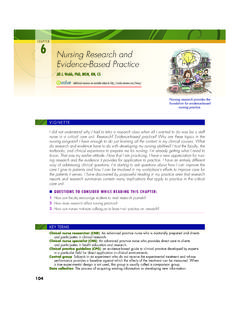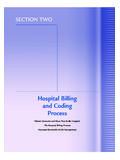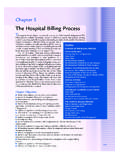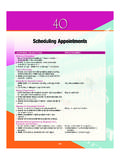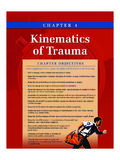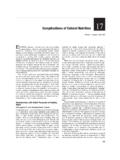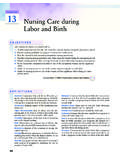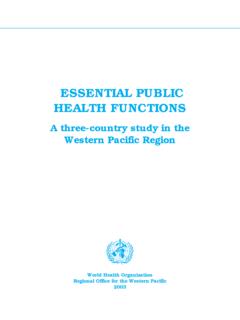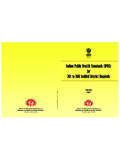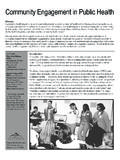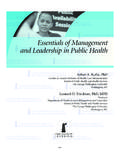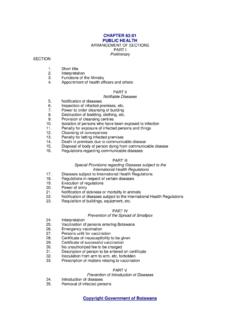Transcription of chapter 9 Population-Based Public Health Nursing …
1 C h a p t e r9 Population-Based Public Health Nursing Practice: The Intervention WheelLinda Olson Keller, MS, BSN, APRN, BCLinda Olson Keller is a Senior Research Scientist in Public Health Nursing Policy and Partnerships at the University of Minne-sota School of Nursing . For the past 25 years she has focused on Population-Based community assessment, program plan-ning, and evaluation. Linda s Public Health Nursing practice includes consultation and research with state and local Health departments throughout the United Strohschein, MS, RN/PHN, APRN, BCSue Strohschein s Public Health Nursing career spans more than 35 years and includes practice in both local and state Health departments in Minnesota. Her position as a generalized Public Health nurse consultant for the Minnesota Department of Health since 1982 provides rich opportunities for supporting and promoting Public Health Nursing practice at both program-matic and systems Briske, MA, RN, CPNPL aurel Briske is the Public Health Nursing Director for the Minnesota Department of Health , where she manages a technical support and training program for Public Health nurses and local Public Health departments.
2 She has spent her career in state and local Health departments working as a Public Health nurse and pediatric nurse practitioner in community clinics. Laurel has also practiced in the Public Health fields of injury and violence prevention and children with special Health D I T I O N A L R E S O U R C E SEVOLVE WEBSITE Healthy People 2010 WebLinks Quiz Case Studies Glossary Answers to Practice Application Content UpdatesStanhope 978-0-323-04540-7/10015OB J E C T I V E S1. Identify the components of the Intervention Describe the assumptions underlying the Intervention Define the wedges and interventions of the Intervention Differentiate among three levels of practice (community, systems, and individual/family).5. Apply the Nursing process at three levels of reading this chapter , the student should be able to do the following:KE Y T E R M Sadvocacy, p.
3 204case finding, p. 199case management, p. 199coalition building, p. 204collaboration, p. 204community, p. 192community level practice, p. 192community organizing, p. 204consultation, p. 199counseling, p. 199delegated functions, p. 199determinants of Health , p. 191disease and other Health event investigation, p. 199health teaching, p. 199individual-level practice, p. 193intermediate goals, p. 208interventions, p. 194levels of practice, p. 189outcome Health status indicators, p. 208outreach, p. 199policy development, p. 204policy enforcement, p. 204population, p. 191population at risk, p. 191population of interest, p. 191prevention, p. 192primary prevention, p. 194public Health Nursing , p. 191referral and follow-up, p. 199screening, p. 199secondary prevention, p. 194social marketing, p. 204surveillance, p. 199systems-level practice, p.
4 192tertiary prevention, p. 194wedges, p. 193 See Glossary for definitionsCH A P T E R O U T L I N EThe Intervention Wheel Origins and EvolutionAssumptions Underlying the Intervention WheelAssumption 1: Defining Public Health Nursing PracticeAssumption 2: Public Health Nursing Practice Focuses on PopulationsAssumption 3: Public Health Nursing Practice Considers the Determinants of HealthAssumption 4: Public Health Nursing Practice Is Guided by Priorities Identified Through an Assessment of Community HealthAssumption 5: Public Health Nursing Practice Emphasizes PreventionAssumption 6: Public Health Nurses Intervene at All Levels of PracticeAssumption 7: Public Health Nursing Practice Uses the Nursing Process at All Levels of PracticeAssumption 8: Public Health Nursing Practice Uses a Common Set of Interventions Regardless of Practice SettingAssumption 9: Public Health Nursing Practice Contributes to the Achievement of the 10 Essential ServicesAssumption 10: Public Health Nursing Practice Is Grounded in a Set of Values and BeliefsUsing the Intervention Wheel in Public Health Nursing PracticeComponents of the ModelComponent 1: The Model Is population BasedComponent 2: The Model Encompasses Three Levels of PracticeComponent 3: The Model Identifies and Defines 17 Public Health InterventionsAdoption of the Intervention Wheel in Practice, Education, and ManagementAPPLYING THE Nursing PROCESS IN Public Health Nursing PRACTICEA pplying the Process to an Individual/Family LevelCommunity AssessmentPublic Health Nursing Process.
5 Assessment of a FamilyPublic Health Nursing Process: DiagnosisPublic Health Nursing Process: Planning (Including Selection of Interventions) Public Health Nursing Process: ImplementationPublic Health Nursing Process: EvaluationApplying the Public Health Nursing Process to a Systems Level of Practice ScenarioPublic Health Nursing Process: AssessmentPublic Health Nursing Process: DiagnosisPublic Health Nursing Process: Planning (Including Selection of Interventions) Public Health Nursing Process: ImplementationPublic Health Nursing Process: EvaluationApplying the Public Health Nursing Process to a Community Level of Practice ScenarioCommunity Assessment ( Public Health Nursing Process: Assessment)Community Diagnosis ( Public Health Nursing Process: Diagnosis)Community Coalition Plan ( Public Health Nursing Process: Planning, Including Selection of Interventions)Coalition Implementation ( Public Health Nursing Process: Implementation)Coalition Evaluation ( Public Health Nursing Process: Evaluation)188 P a r t Three Conceptual and Scientific Frameworks Applied to population -Centered NursingStanhope 978-0-323-04540-7/10015C Ha P t E r 9 Population-Based Public Health Nursing Practice: The Intervention Wheel 189In these times of change, the Public Health system is constantly challenged to keep focused on the Health of populations.
6 The Intervention Wheel is a conceptual framework that has proven to be a useful model in defin-ing Population-Based practice and explaining how it con-tributes to improving population Intervention Wheel provides a graphic illustration of Population-Based Public Health practice (Keller et al, 1998, 2004a,b). It was previously introduced as the Public Health Intervention Model and was known nationally as the Minnesota Model, and it is now often simply re-ferred to as the Wheel. the Wheel depicts how Public Health improves population Health through interventions with communities, the individuals and families that com-prise communities, and the systems that impact the Health of communities (Figure 9-1). the Wheel was derived from the practice of Public Health nurses and intended to sup-port their work.
7 It gives Public Health nurses a means to describe the full scope and breadth of their chapter applies the Intervention Wheel frame-work to Public Health Nursing practice. However, it is important to note that other Public Health members of the interdisciplinary team such as nutritionists, Health educators, planners, physicians, and epidemiologists also use these INTERVENTION WHEEL ORIGINS AND EVOLUTIONthe original version of the Wheel resulted from a grounded theory process carried out by Public Health nurse consul-tants at the Minnesota Department of Health in the mid 1990s. this was a period of relentless change and consider-able uncertainty for Minnesota s Public Health Nursing community. Debates about Health care reform and its im-pact on the role of local Public Health departments created confusion about the contributions of Public Health nurs-ing to population -level Health improvement.
8 In response to the uncertainty, the consultant group presented a series of workshops across the state highlighting the core func-tions of Public Health Nursing practice (see chapter 1 for a description of these core functions). a workshop activity required participants to describe the actions they under-took to carry out their work. the consultant group ana-lyzed 200 practice scenarios developed at the workshops that ranged from home care and school Health to home visiting and correctional Health . In the final analysis, 17 actions common to the work of Public Health nurses re-gardless of their practice setting were identified. the analy-sis also demonstrated that most of these interventions were implemented at three levels. Interventions were car-ried out (1) with individuals, either singly or in groups, and with families; (2) with communities as a whole; and (3) with systems that impact the Health of communities.
9 A wheel-shaped graphic was developed to illustrate the set of interventions and the levels of practice (see Figure 9-1).the interventions were subjected to an extensive review of supporting evidence in the literature though a grant from the federal Division of Nursing awarded to the Min-nesota Department of Health in the 1990s. In 1999 the Public Health nurse consultant group at the Minnesota Department of Health designed and implemented a sys-tematic process identifying more than 600 items from supporting evidence in the literature. these items were rated for their quality and relevancy by a group of graduate Nursing students. the resulting subset of 221 items was further analyzed by 2 expert panels. One panel was com-posed of Public Health Nursing educators and expert prac-titioners from five states (Iowa, Minnesota, North Dakota, South Dakota, and Wisconsin).
10 The other panel was a similarly composed national panel. the result was a slightly modified set of 17 interventions. Figure 9-2 graph-ically illustrates the systematic critique. Each intervention The Intervention Wheel is composed of threedistinct elements of equal importance: First, the model is population based . Second, the model encompasses threelevels of practice (community, systems,individual/family). Third, the model identifies and defines17 Public Health intervention and level of practicecontributes to improving population focusedCommunityfocusedSystems focusedPopulationbasedCasefindingCommuni tyorganization BuildingCollaborationConsultationCounsel ingHealthteachingDelegatedfunctionsCase managementReferral andfollow-upScreeningOutreachDisease andhealth eventinvestigationSocialMarketingPolicyd evelopment andenforcementSurveillance FIG.

